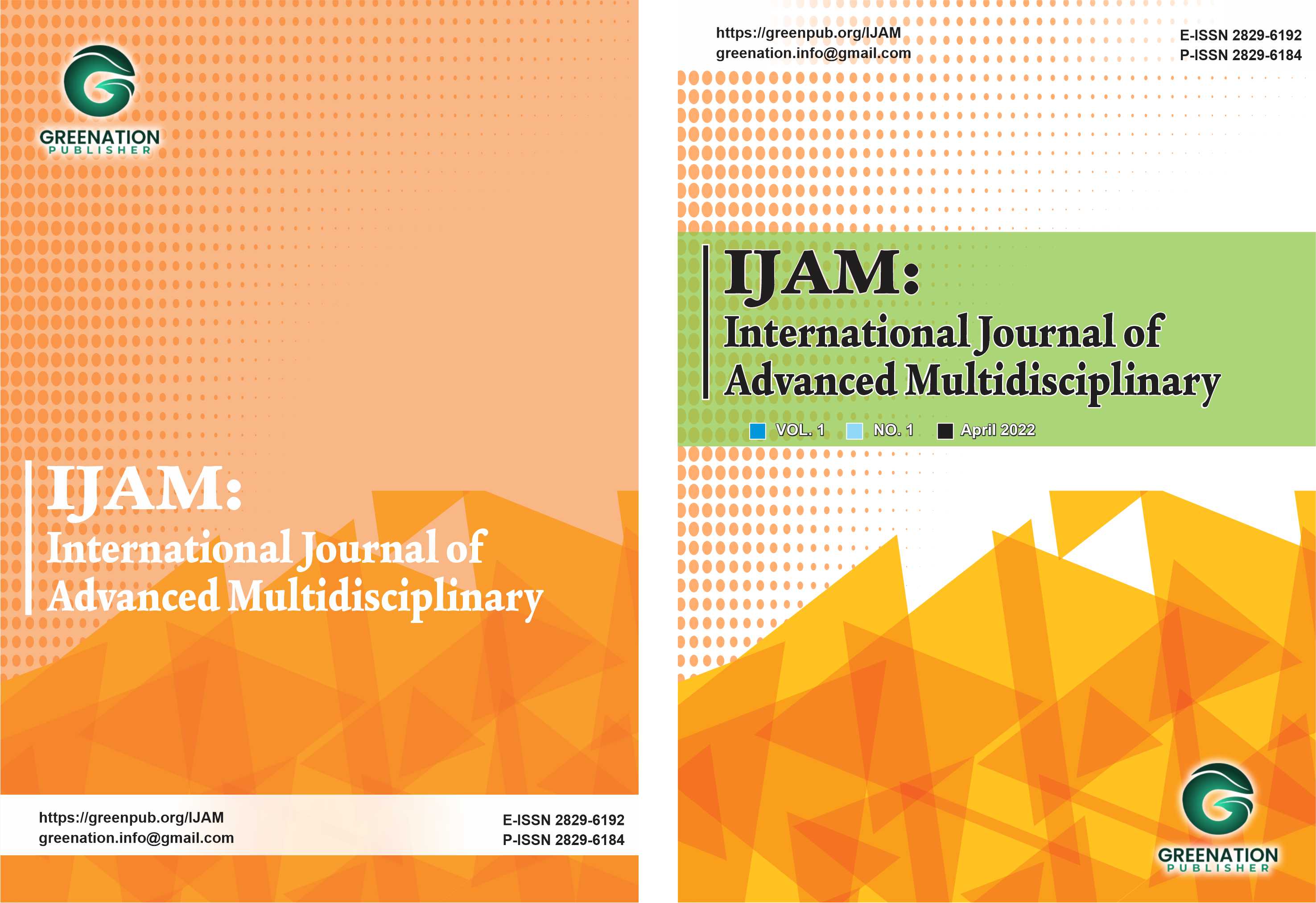Co-Incidence of Diabetic Ketoacidosis and Thyroid Crisis at Klungkung Regional General Hospital
DOI:
https://doi.org/10.38035/ijam.v3i1.552Keywords:
DKA, Thyroid crisis, CoincidenceAbstract
Diabetic ketoacidosis (DKA) is a complication of diabetes mellitus characterized by uncontrolled of hyperglycemia, metabolic acidosis and increased ketone concentrations in the body. Thyroid crisis is one of the acute and life-threatening complications of hyperthyroidism where the symptoms involve multi-organ systems. The coincidence of DKA with Thyroid Crisis is rare and the pathophysiology of this coincidence is not well known and is still widely debated. Early recognizing and managing both emergencies will improve the success of patient management. In these case report there is a coincident of DKA and thyroid crisis at Klungkung Regional General Hospital. Case Report: KS, female, 57 years old came to the emergency room of RSUD Klungkung with the main complaint of nausea and vomiting accompanied by shortness of breath, cough with yellow phlegm and fever since 5 days ago. Other complaints were weakness, dizziness, and palpitations. The patient has a history of DM since 3 years ago and is routinely treated using basal and prandial insulin. Thyroid disease was known since 6 months ago and routinely took Tiamazol, but since 5 days ago the patient stopped the medication because he felt weak and ate little because of complaints of nausea and vomiting with concerns that blood sugar was falling. On examination of vital signs the patient appeared very ill, consciousness E3V4M6 appeared agitated. Blood pressure 130/80 mmHg, pulse 102x/min. Respiratory rate 28x/min seemed fast and deep breaths, axillary temperature 390C with oxygen saturation 89% room temperature and 98% with oxygen 4 liters per minute nasal cannul. On auscultation of the lungs, coarse rhonki sound in the right and left paracardial confirms the clinical pneumonia. On laboratory examination, hyperglycemia was found, with blood glucose (BS) 456mg/dL, urinalysis results obtained ketones +3 and glucose +3. The results of blood gas and electrolyte analysis showed metabolic acidosis at pH 7.17, PCO2 19.0mmHg, HCO3- 7.0 mmol/L, BE (B) -22mmol/L and Potassium 5.4mmol/L. FT4 was 29.87 pmol/L and TSH <0.10 uIU/mL with a Burch Wartofsky score of 55 supporting the diagnosis of thyroid crisis. The patient was admitted to the intensive care unit with the management of hydration to overcome fluid and electrolyte balance disorders, blood glucose regulation with rapid insulin drip, administration of thyroid hormone activity antagonists and management of pneumonia with adequate antibiotics. Discussion: DKA and thyroid crisis are two separate events and their co-occurrence is rare. Both are life-threatening conditions that if not treated promptly will lead to death. The pathophysiology of the coincidence of DKA and thyroid crisis is unknown and debated. One theory states that thyrotoxicosis will change carbohydrate metabolism and increase insulin resistance by increasing glycogen breakdown in the liver, while uncontrolled glucose production will increase metabolic damage. Management of this coincidence requires tight regulation of the patient's glucose levels as the administration of corticosteroids in the management of thyroid crisis runs the risk of increasing glucose levels and thus aggravating the patient's DKA condition. Conclusion: A case of DKA coincidence with thyroid crisis triggered by pneumonia in a 57-year-old woman at RSUD Klungkung has been reported. By correcting fluid and electrolyte balance disturbances, tight blood glucose regulation, administration of antithyroid and corticosteroids at optimal doses and handling pneumonia with adequate antibiotics gave good results to the patient.
References
Kitabchi AE, Umpierrez GE, Miles JM, Fisher JN. 2009. Krisis hiperglikemik pada Pasien Diabetes Dewasa. Perawatan Diabetes: 32 (7):1335-43)
Fazeli Farsani S, Brodovicz K, Soleymanlou N, Marquard J, Wissinger E, Maiese BA. 2017 Insiden dan prevalensi ketoasidosis diabetik (DKA) di antara orang dewasa dengan diabetes mellitus tipe 1 (T1D): tinjauan literatur sistematis. BMJ Terbuka: 7 (7):e016587.
Maulidiyah, N., et all. 2018. Gagal Napas pada Pneumonia dengan Ketoasidosis Diabetik. J Respir Indo 2018; 38(1): 57-63)
Chiha M, Samarasinghe S, Kabaker AS. J. 2015. Badai tiroid: ulasan terkini. Perawatan Intensif Med; 30 :131–140.
Ross DS, Burch HB, Cooper DS, Greenlee MC, Laurberg P, Maia AL, Rivkees SA, Samuels M, Sosa JA, Stan MN, Walter MA. 2016 American Thyroid Association Guidelines for Diagnosis and Management of Hyperthyroidism and Other Causes of Thyrotoxicosis. Thyroid.;26(10):1343-1421.
Das BB, Shakti D, Akam-Venkata J, Obi O, Weiland MD, Moskowitz W. 2022. SARS-CoV-2 infection induced thyroid storm and heart failure in an adolescent girl. Cardiol Young;32(6):988-992.
Galindo RJ, Hurtado CR, Pasquel FJ, García Tome R, Peng L, Umpierrez GE. National Trends in Incidence, Mortality, and Clinical Outcomes of Patients Hospitalized for Thyrotoxicosis With and Without Thyroid Storm in the United States, 2004-2013. Thyroid. 2019 Jan;29(1):36-43
Potenza M, Via MA, Yanagisawa RT Kelebihan hormon tiroid dan metabolisme karbohidrat. Praktek Endokrin; 15 :254–262
Griffiths, S., Peak, D., Bridwell, R. Long, B. 2020. Thyroid Storm and Diabetic Ketoacidosis Presenting to the Emergency Department. Cureus. 12(1):e6751
Ahmed M, McKenna MJ, Crowley RK. 2017. Diabetic Ketoacidosis in Patients with Type 2 Diabetes Recently Commenced on Sglt-2 Inhibitors: An Ongoing Concern. Endocrine practice : official journal of the American College of Endocrinology and the American Association of Clinical Endocrinologists;23(4):506-508.,
Edge JA, Roy Y, Bergomi A, Murphy NP, Ford-Adams ME, Ong KK, Dunger DB. 2006. Conscious level in children with diabetic ketoacidosis is related to severity of acidosis and not to blood glucose concentration. Pediatr Diabetes;7(1):11–15
Jameson JL, Fauci AS, Kasper DL, Hauser SL, Longo DL, dan Loscalzo J. 2015. Harrison’s Pincipal of Internal Medicine. Edisi 19. New York. McGraw Hill Education
Chua HR, Venkatesh B, Stachowski E, Schneider AG, Perkins K, Ladanyi S, Kruger P, Bellomo R. 2012. Plasma-Lyte 148 vs 0.9% saline for fluid resuscitation in diabetic ketoacidosis. J Crit Care;27(2):138-45.
Pedoman Nasional Pelayanan Kedokteran (PNPK). 2023, Tata Laksana Pneumonia pada Dewasa, PNPK, Jakarta.
PERKENI. 2021. Pedoman Pengelolaan dan Pencegahan Diabetes Melitus Tipe 2 Dewasa di Indonesia (1st ed.). PB. PERKENI.
American Diabetes Association. 2023. Standards Of Medical Care In Diabetes. Clinical And Applied Research And Education, 44(SUPPL.), 11–16.
Carroll, R., Matfin, G. 2010. Endocrine and Metabolic emergencies: thyroid storm. PMC PubMed 1(3): 139–145
Downloads
Published
How to Cite
Issue
Section
License
Copyright (c) 2024 I Gusti Agung Wedanta Mahadewi, Ni Made Putri Purnama Dewi

This work is licensed under a Creative Commons Attribution 4.0 International License.
Authors who publish their manuscripts in this journal agree to the following conditions:
- The copyright on each article belongs to the author(s).
- The author acknowledges that the International Journal of Advanced Multidisciplinary (IJAM) has the right to be the first to publish with a Creative Commons Attribution 4.0 International license (Attribution 4.0 International (CC BY 4.0).
- Authors can submit articles separately, arrange for the non-exclusive distribution of manuscripts that have been published in this journal into other versions (e.g., sent to the author's institutional repository, publication into books, etc.), by acknowledging that the manuscript has been published for the first time in the International Journal of Advanced Multidisciplinary (IJAM).























